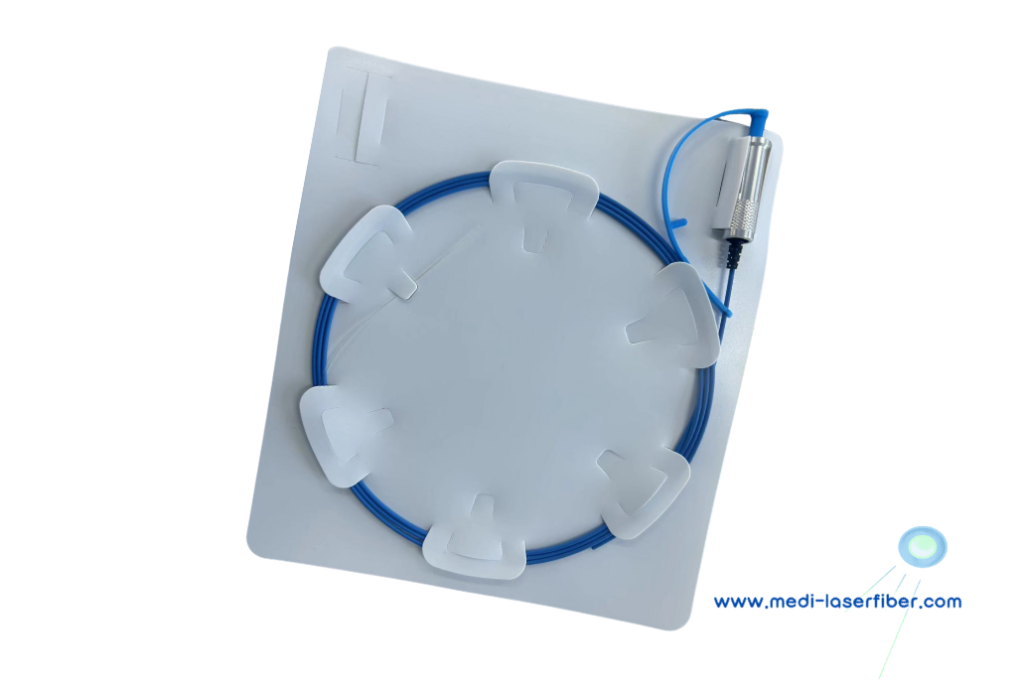Introduction
Holmium lasers have revolutionized the field of minimally invasive surgery, offering precise and effective treatment options for a variety of medical conditions. In this blog post, we will explore the key aspects of holmium lasers, including their applications in holmium laser lithotripsy and holmium laser enucleation, the characteristics of holmium laser fibers, and the operation instructions for safe and successful procedures.
Applications of Holmium Lasers
Holmium Laser Lithotripsy
Holmium laser lithotripsy is a widely used technique for the treatment of urinary stones. The holmium laser emits high – energy pulses at a specific wavelength that can break down stones into smaller fragments, which can then be easily removed from the body. This procedure is minimally invasive, resulting in reduced patient discomfort, shorter hospital stays, and faster recovery times compared to traditional open surgery.
Holmium Laser Enucleation
Holmium laser enucleation is commonly used in the treatment of benign prostatic hyperplasia (BPH). The laser energy is used to precisely remove the excess prostate tissue, relieving urinary obstruction and improving urinary flow. This technique offers excellent outcomes in terms of symptom relief and long – term patient satisfaction.
Holmium Laser Fibers
Wavelength
The holmium laser typically operates at a wavelength of around 2100 nm. This wavelength is highly absorbed by water, which is abundant in biological tissues. The absorption of laser energy by water leads to the formation of a vapor bubble, which can effectively disrupt tissue or break down stones.
Fiber Selection
Holmium laser fibers come in a variety of diameters, common type is in 272, 365, 550, and 940 micron diameter. Smaller diameter fibers are often used for more delicate procedures, such as in the treatment of small urinary stones or in endoscopic surgeries where access is limited. Larger diameter fibers can deliver higher energy levels and are suitable for procedures that require more power, like enucleating larger prostate tissue volumes.
Operation Instructions
Pre – operation
- Patient Preparation.
- Equipment Check: Inspect the holmium laser system and the associated fiber for any signs of damage. Check the laser’s power output calibration to ensure accurate energy delivery. Connect the fiber to the laser source according to the manufacturer’s instructions.
- Sterilization: Sterilize the holmium laser fiber and any other instruments used in the procedure to prevent infection.
Intra – operation
- Insertion of the Fiber: Under appropriate endoscopic visualization, carefully insert the holmium laser fiber into the body cavity or the targeted area. Take care not to damage the fiber or the surrounding tissues during insertion.
- Setting the Laser Parameters: Adjust the laser’s energy settings (such as pulse energy, frequency) based on the type of procedure and the tissue characteristics. For lithotripsy, higher energy pulses may be required to break the stones, while for enucleation, a more controlled energy delivery is needed to avoid excessive tissue damage.
- Performing the Procedure: Activate the laser and use the fiber to target the tissue or stone. Move the fiber in a controlled manner to ensure complete treatment. Continuously monitor the progress of the procedure using endoscopic imaging.
Post – operation
- Removal of the Fiber: After the procedure is completed, carefully remove the holmium laser fiber from the body.
- Patient Monitoring.
- Equipment Maintenance: Clean and disinfect the holmium laser system and the fiber according to the manufacturer’s guidelines for future use.
In conclusion, holmium lasers, along with their specialized fibers, play a crucial role in modern minimally invasive surgery. Understanding their applications, fiber characteristics, and proper operation instructions is essential for surgeons to achieve optimal treatment outcomes.
